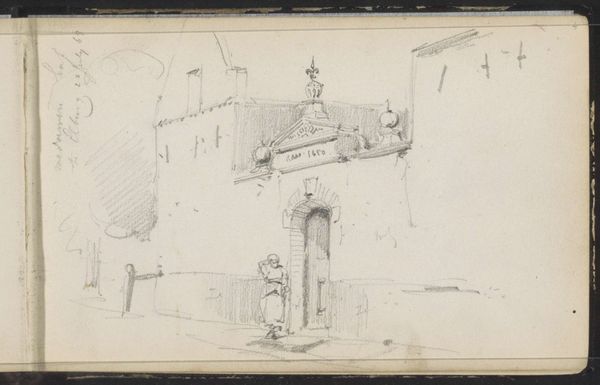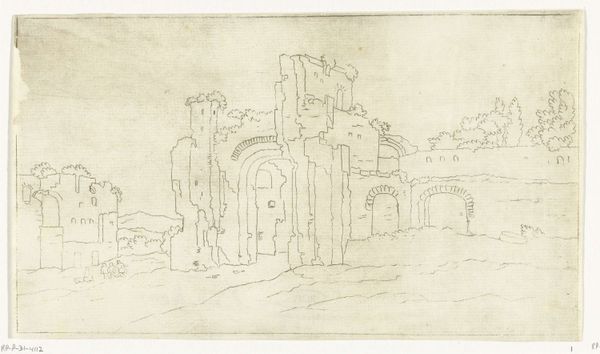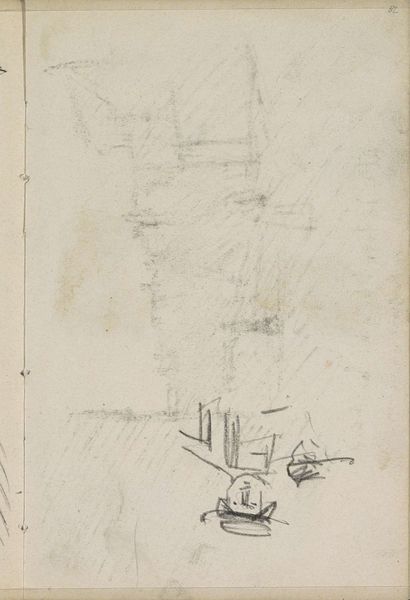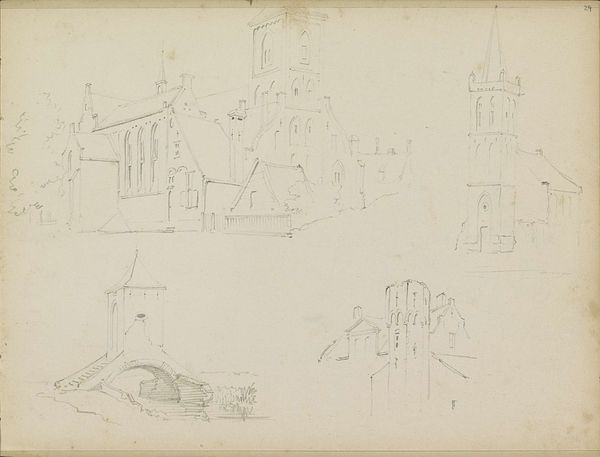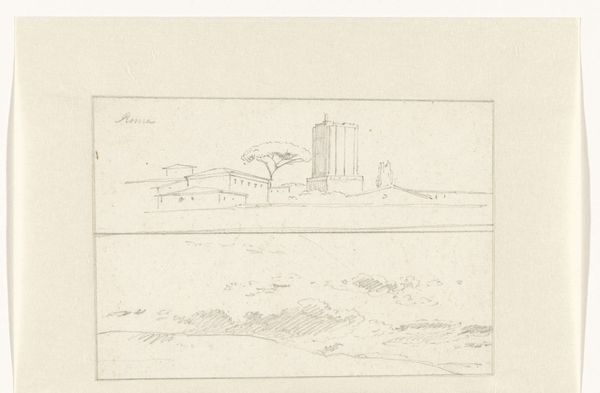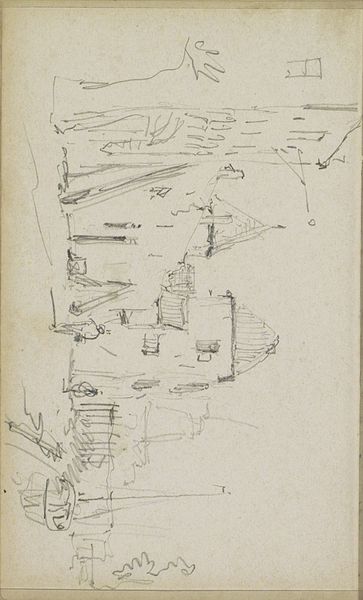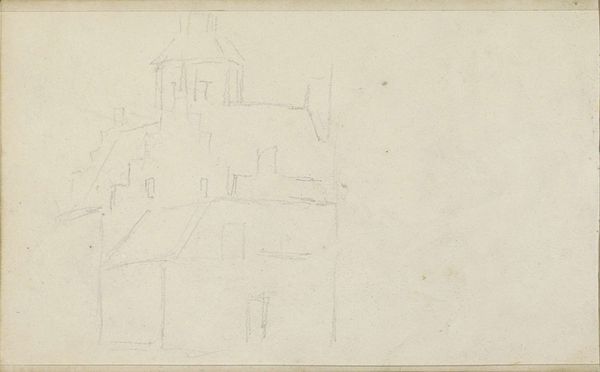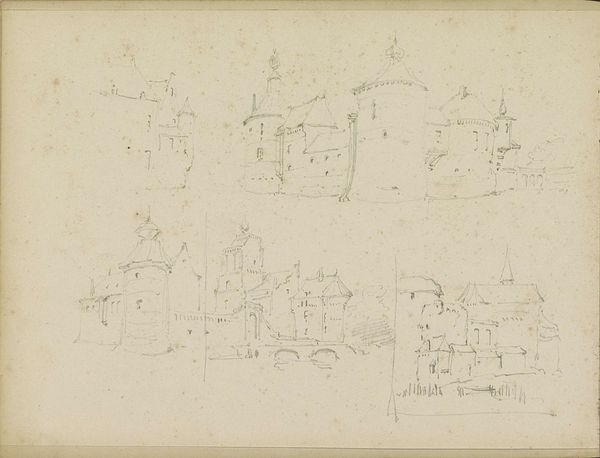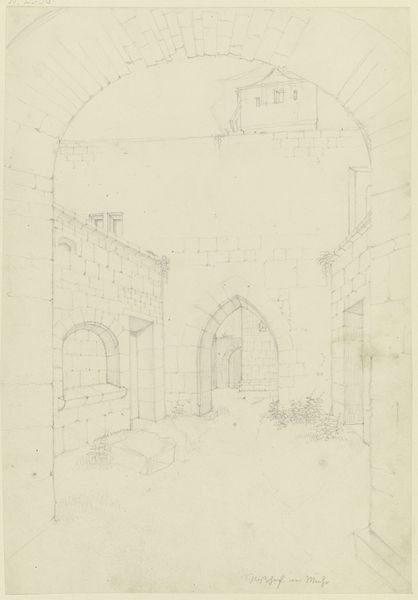
drawing, pencil
#
drawing
#
landscape
#
romanticism
#
pencil
Copyright: Rijks Museum: Open Domain
Curator: This pencil drawing, made by Johannes Tavenraat in 1844, offers a glimpse of Slot Langenau near Nassau. It's currently held in the Rijksmuseum. Editor: There's a beautiful fragility to the work, isn't there? The lines are so delicate; almost like a memory fading at the edges. Curator: It speaks volumes about the Romantic era's fascination with ruins and the past. One sees these structures as emblems of time's relentless march, viewed against the backdrop of a rising nationalism and the rediscovery of folk traditions. Editor: Indeed. The contrast in line weight contributes a sense of depth and atmospheric perspective. Note, too, the subtle use of light and shadow to model the forms of the castle walls, conveying their mass without unnecessary detail. Curator: What's most striking for me is the drawing’s presumed purpose. This wasn't conceived as a grand statement; instead, it looks to me more like a personal sketch. We could examine its connection with early forms of tourism or exploration and understand how that might impact artistic intention, for instance. Editor: I appreciate the way the composition guides your eye upwards, drawing attention to the castle ramparts and the interplay between geometry and nature. There is an unspoken connection with sublime landscape. Curator: And those loose, almost scribbled lines hinting at foliage—they certainly prevent the depiction of this historic site from being too clinical. Tavenraat uses nature, in the sketch, as the ultimate frame through which we are invited to consider cultural narratives embedded in landscape itself. Editor: The simplicity almost verges on abstraction. Its skeletal suggestion encourages you to build the fortress and its landscape around it, filling the gaps using our own visual literacy. Curator: Yes, but it is through studying artistic interpretations and these sketches as cultural documents that can help us decode public meanings or project onto these silent monoliths through the lens of social history and lived experiences. Editor: It really gives a certain life, as if its subject just left only moments ago. Curator: A testament to how much our relationship with the past depends on what artists like Tavenraat choose to show us—or, as importantly, what they leave out. Editor: Ultimately, I would like to believe that is precisely that incompleteness is its biggest strength.
Comments
No comments
Be the first to comment and join the conversation on the ultimate creative platform.


